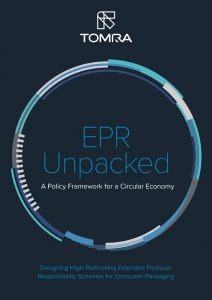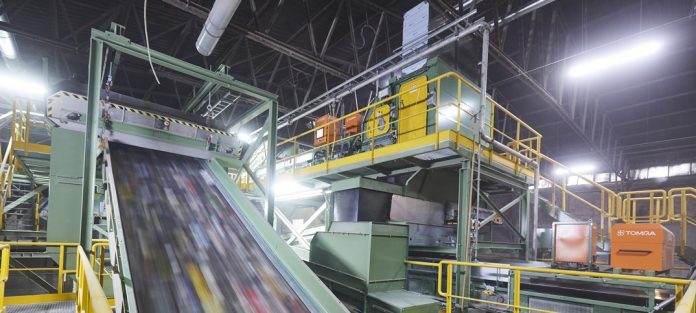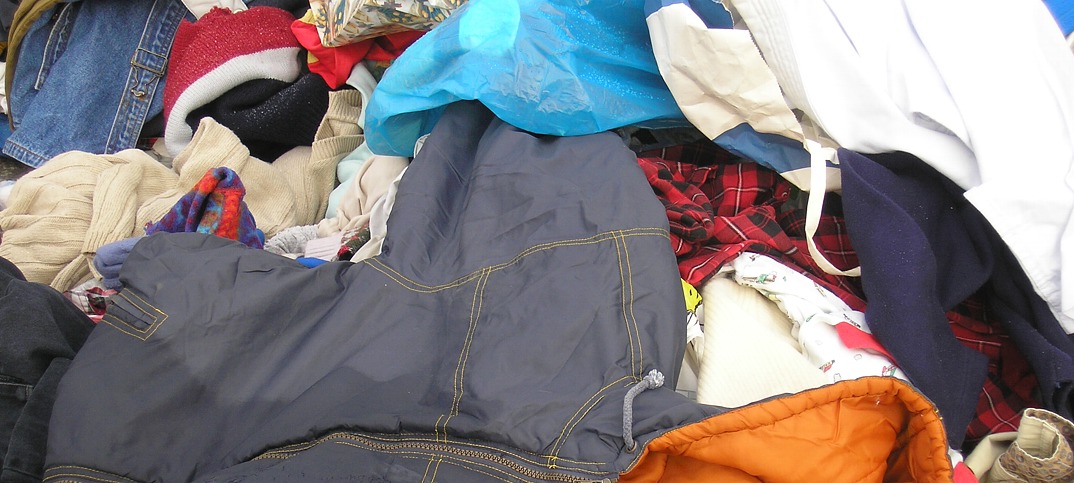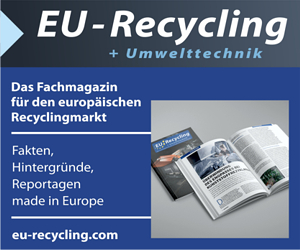Tomra offers practical solutions to deal with the ever-growing volume of packaging waste. To mark its 50th anniversary, the manufacturer has published its next white paper which highlights Extended Producer Responsibility (EPR). This policy principle has the power to accelerate society’s shift towards a more circular economy, where resources are reused repeatedly to maximize their value.
EPR ensures that producers and manufacturers take responsibility for the full lifecycle of their packaging – from design to waste collection and recycling, and final disposal. As producers must provide dedicated funding for their own packagaing, this policy principle also can incentivize sustainable packaging design and management based on the waste hierarchy to achieve greater environmental outcomes. Tomra’s new white paper, EPR Unpacked – A Policy Framework for a Circular Economy, not only defines and examines EPR schemes for packaging waste, but it also serves as a detailed guide for policymakers who design or develop EPR schemes, offering a multi-faceted perspective and practical insights to help achieve greater performance.

The white paper names and explains the five design principles required for the successful implementation of an EPR scheme. These are: circularity, which prioritizes the waste hierarchy, incentivizes eco-design, and utilizes reliable measurement protocols; performance, which includes a well-defined scope, clear roles and responsibilities, and comprehensive targets that scale up over time; convenience and user-friendly systems that increase the amount of valuable resources that are collected and processed effectively; producer responsibility which establishes clear rules for the management of packaging waste; and finally, system integrity, which ensures transparency and compliance to support the achievement of targets.
Holistic analysis and organisation of the entire lifecycle of packaging are integral to an active environmental policy, while corresponding eco designs determine recyclate quality, independent of local conditions. The white paper provides advice on re-structuring or fine tuning the existing system, transforming it into a closed loop.
“Our experience in numerous markets on all continents has taught us which methods can be used to successfully address the challenge of managing post-consumer packaging waste, and which combinations work best,” says Wolfgang Ringel, SVP Public Affairs Tomra. “In some regions, where effective waste management systems have been established, more needs to be done to encourage the proper collection, sorting, and recycling of valuable material that is simply thrown away. Implementing legally defined (in other words, mandatory) obligations covering the use of resources, and their responsible handling, is the way forward, as this will result in direct, active climate protection.”

In Asia, local initiatives have developed into cross-industry networks – a response to the fact that 80 per cent of the plastic in the world’s oceans entered them via Asian waterways. Attractive pro-EPR framework regulations should promote investment and ensure the realisation of sustainable development. Today, EPR is not only being applied in Europe but also in other regions. South Africa and Vietnam have recently implemented EPR for packaging, and several states within the United States are currently considering such measures. While these efforts are making great strides in establishing effective systems, national and global harmonization remains a challenge but offer great opportunity for circularity.
In Europe, the robust targets defined in the 2019 Single Use Plastics Directive have resulted in almost all EU member states introducing legislation on deposit return systems for beverage containers, which will apply by 2029. The implementation of EPR legislation is a transformative measure to improve both the quality and quantity of the resources that get recycled, thereby supporting the acceleration to a circular economy.
Source: Tomra






